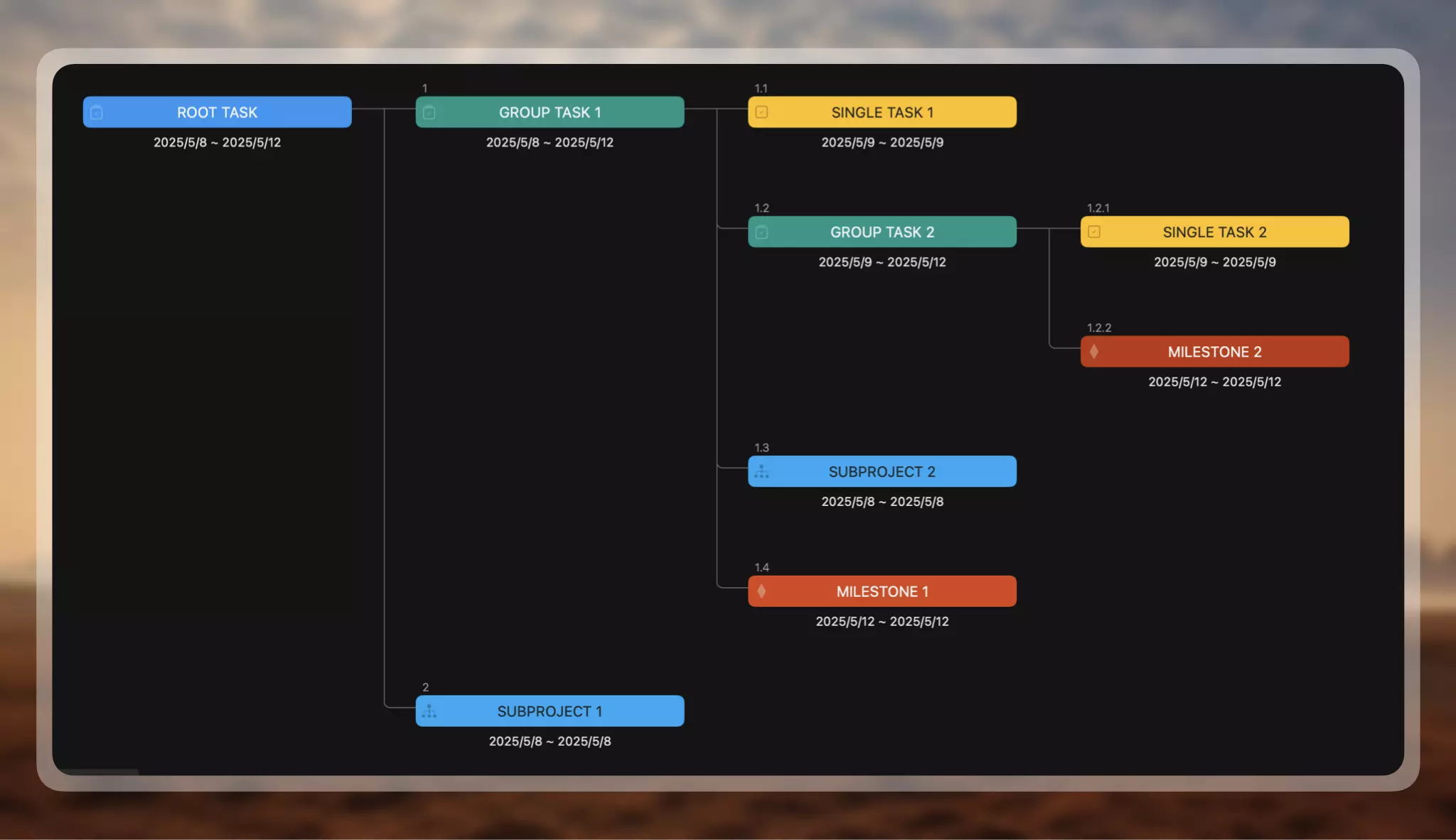Task Kinds
QuickPlanX organizes project work using different kinds of tasks, each serving a specific purpose within the project's hierarchical tree structure. Understanding these task kinds is essential for effective project organization and management.

Task Classification
Tasks in QuickPlanX are classified based on two key factors:
- Position in Tree Structure: Whether a task is at the root, branch, or leaf level of the project hierarchy
- Functional Purpose: The specific role the task plays in organizing and executing project work
Each task kind has distinct characteristics and capabilities that support different aspects of project planning and execution.
Root Task
The root task is the top-level branch node in every project. It represents the entire project and serves as the parent for all other tasks. Every project has exactly one root task.
- Acts as the project's main container
- Cannot be deleted (as it represents the project itself)
- Typically named after the project
- All other tasks are descendants of the root task
Group Task
A group task is any branch node that is not the root task or a subproject task. Group tasks help you organize related work items into logical clusters.
- Can contain multiple child tasks
- Useful for organizing tasks by phase, department, or category
- Can be nested to create multiple levels of organization
- Values in group tasks can often be calculated from their children (like summing costs or dates)
Single Task
A single task is a leaf node that represents an individual work item. These are the actual work packages that team members will complete.
- Represents specific, actionable work
- Cannot contain child tasks
- Has properties like duration, start/end dates, resources, and costs
- The fundamental building blocks of your project plan
Milestone
A milestone is a special type of leaf node that represents a significant point or achievement in your project timeline.
- Marks important dates or deliverables
- Typically has zero duration
- Used to track key project checkpoints
- Helps communicate progress to stakeholders
Subproject Task
A subproject task represents a subproject within its parent project. It combines the characteristics of both a project (containing its own task tree) and a task (existing within a parent project's structure).
Key Characteristics
- Dual Nature: Acts as a complete project internally while appearing as a single task in its parent project's UI
- Task Operations: Supports all basic task operations like moving, linking, and scheduling
- Encapsulation: Encapsulates complex hierarchies into a simplified view within the parent project
- Linkable: Can be linked to other tasks just like any single task
- Container: Functions as a group task that contains and organizes subtasks
Benefits
- Visual Simplification: Complex project hierarchies appear as single tasks in the parent project, reducing visual clutter
- Flexible Management: Can be managed as both an independent project and as part of the larger project structure
- Team Coordination: Enables delegation of entire subprojects to different teams or managers